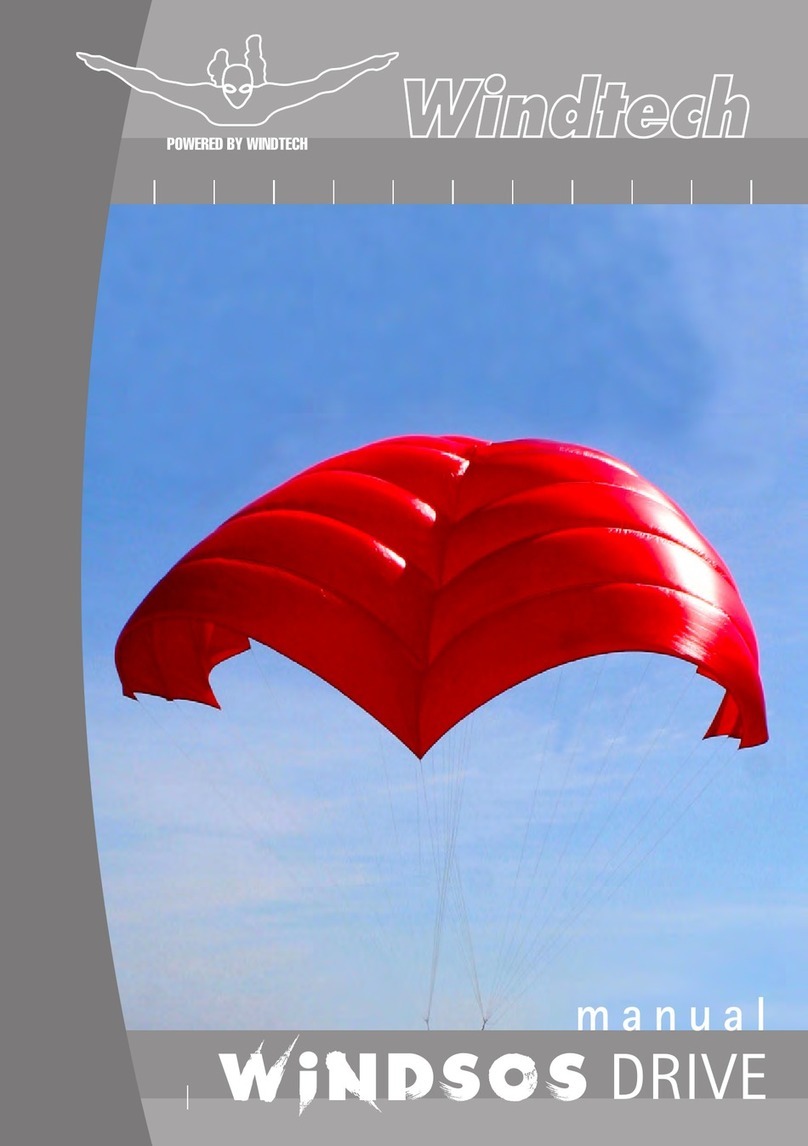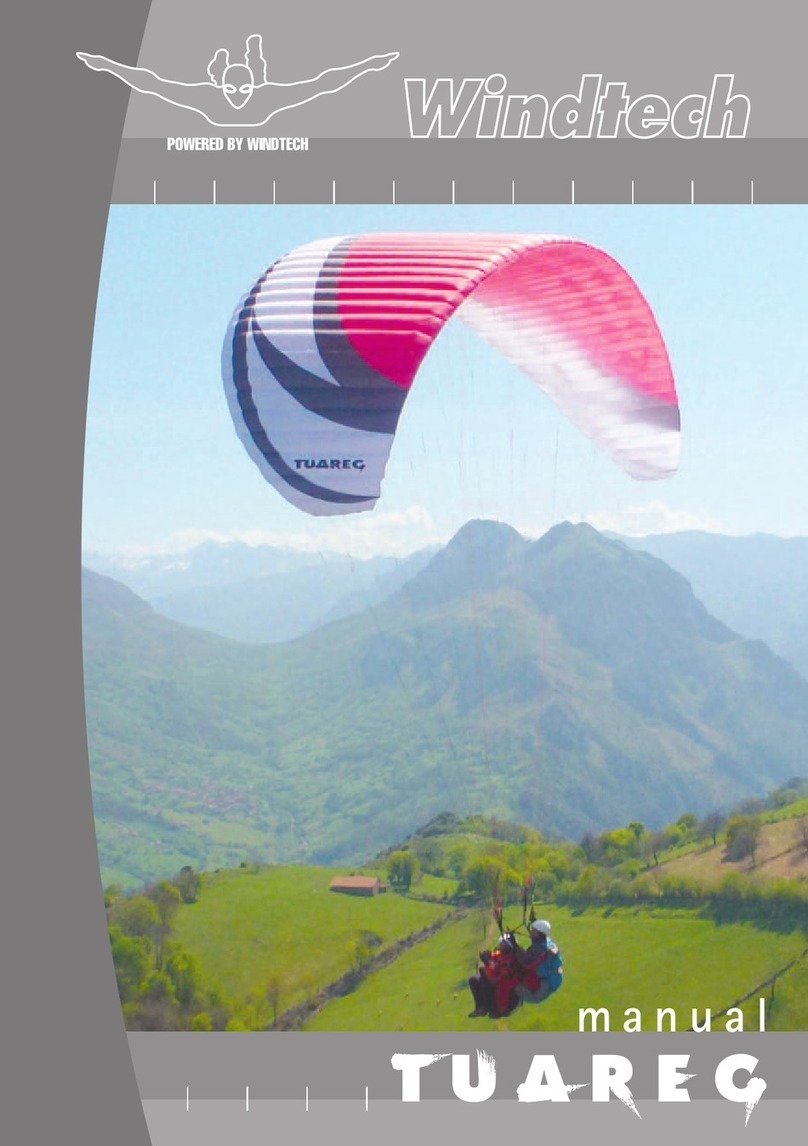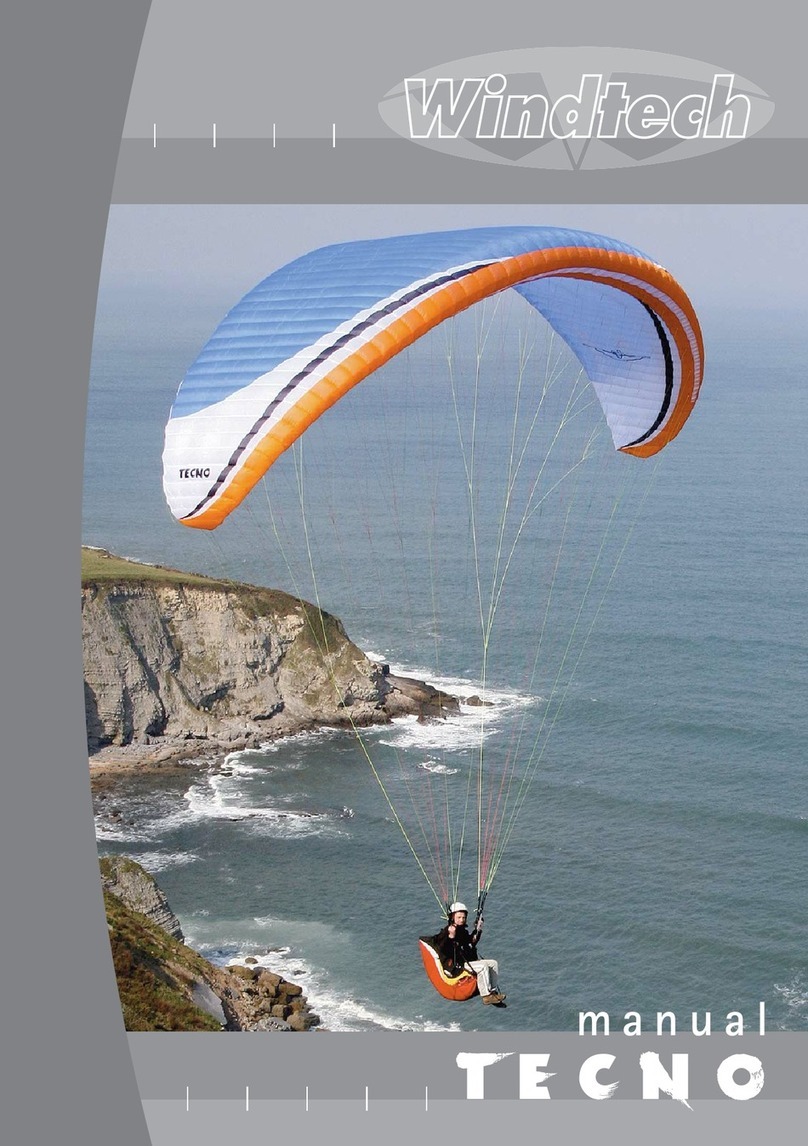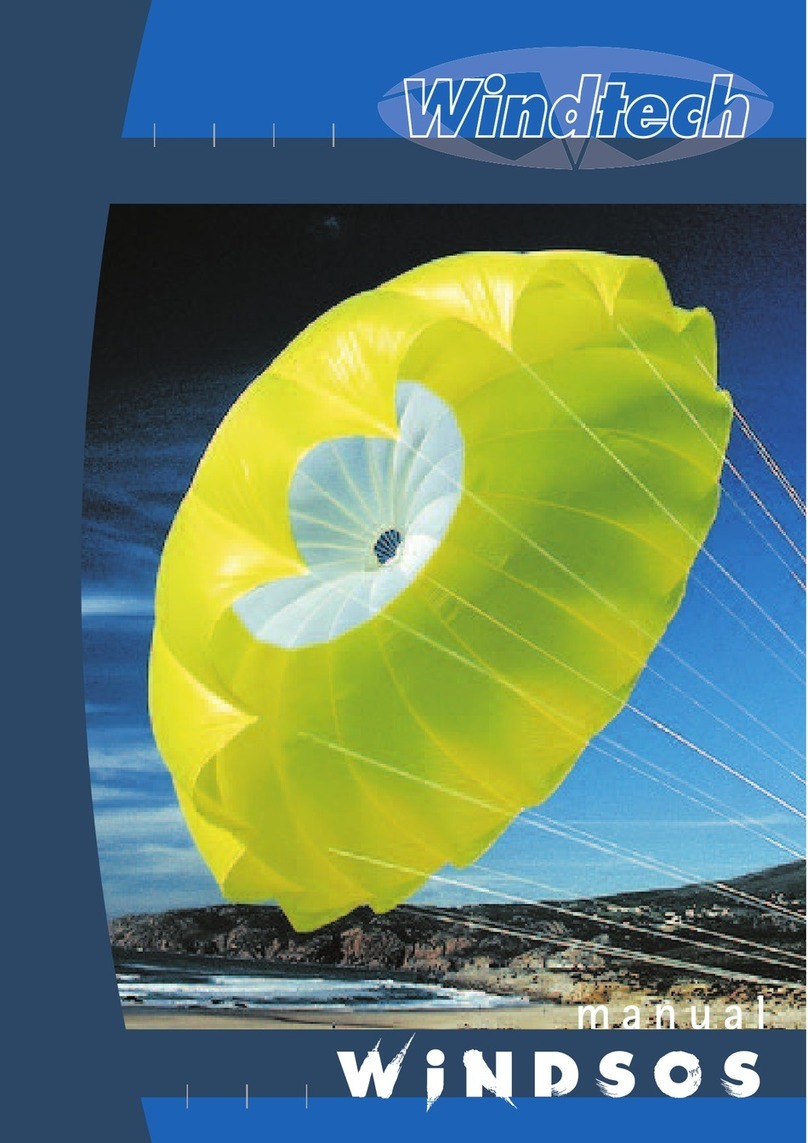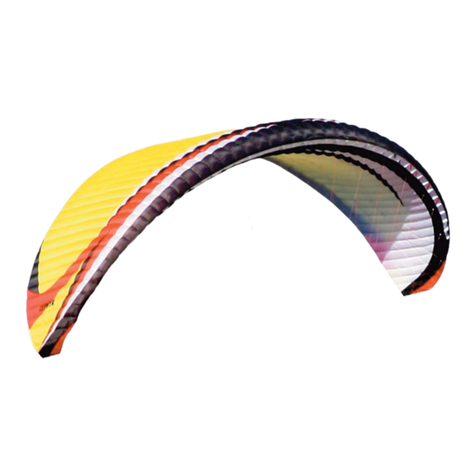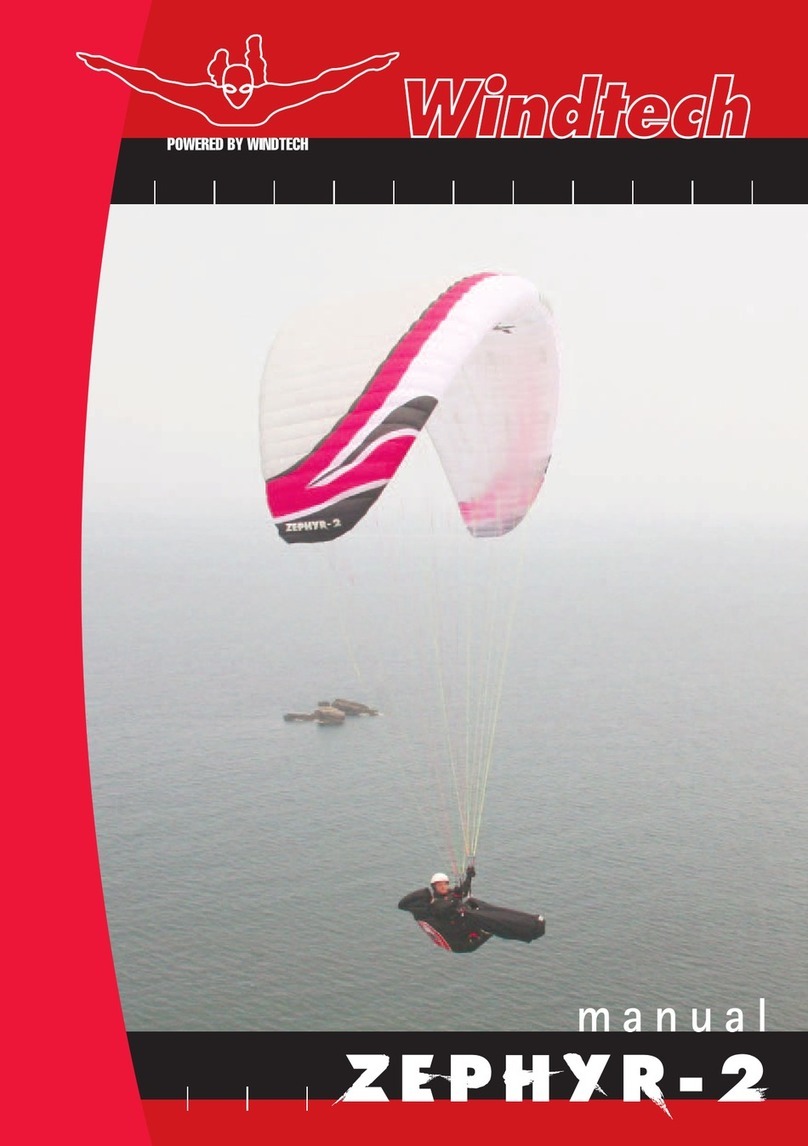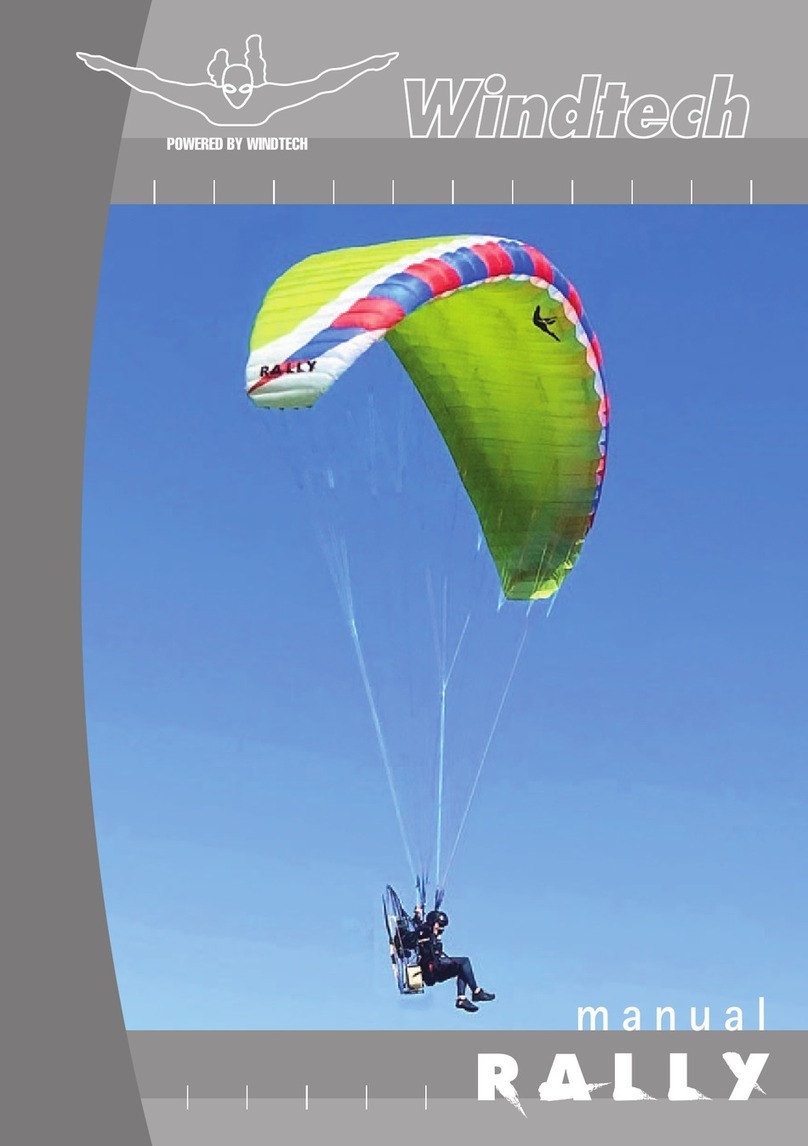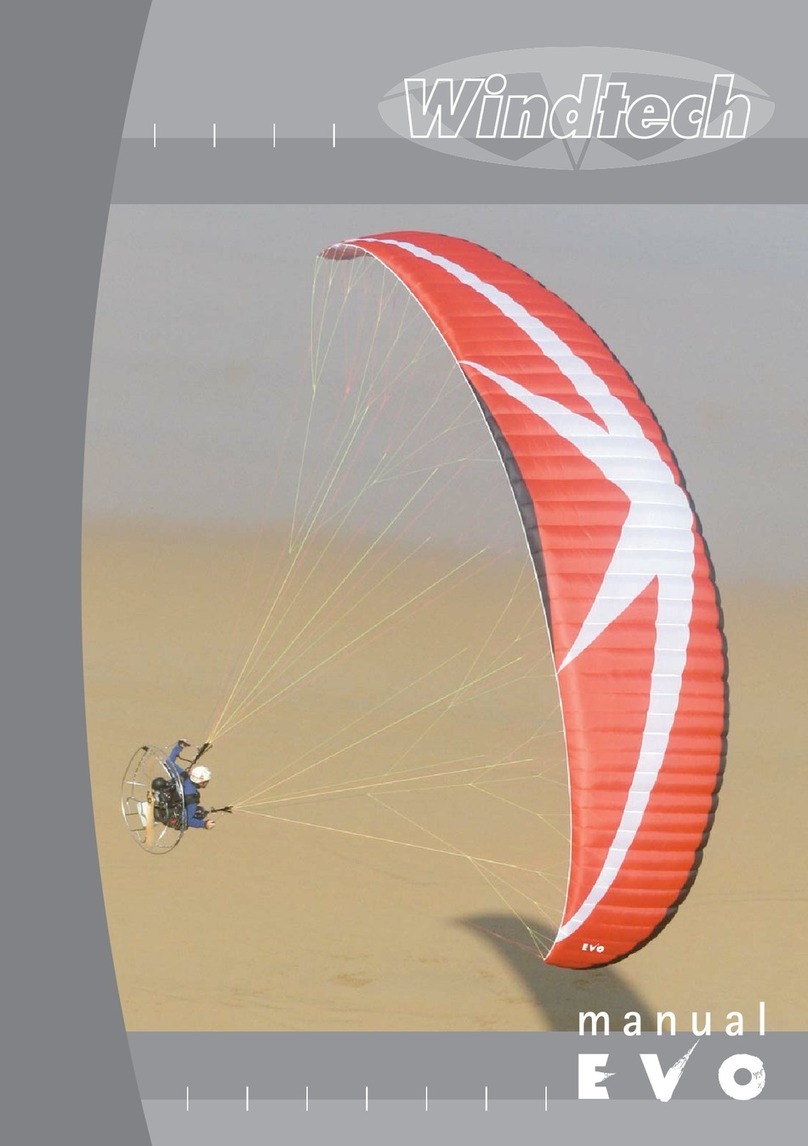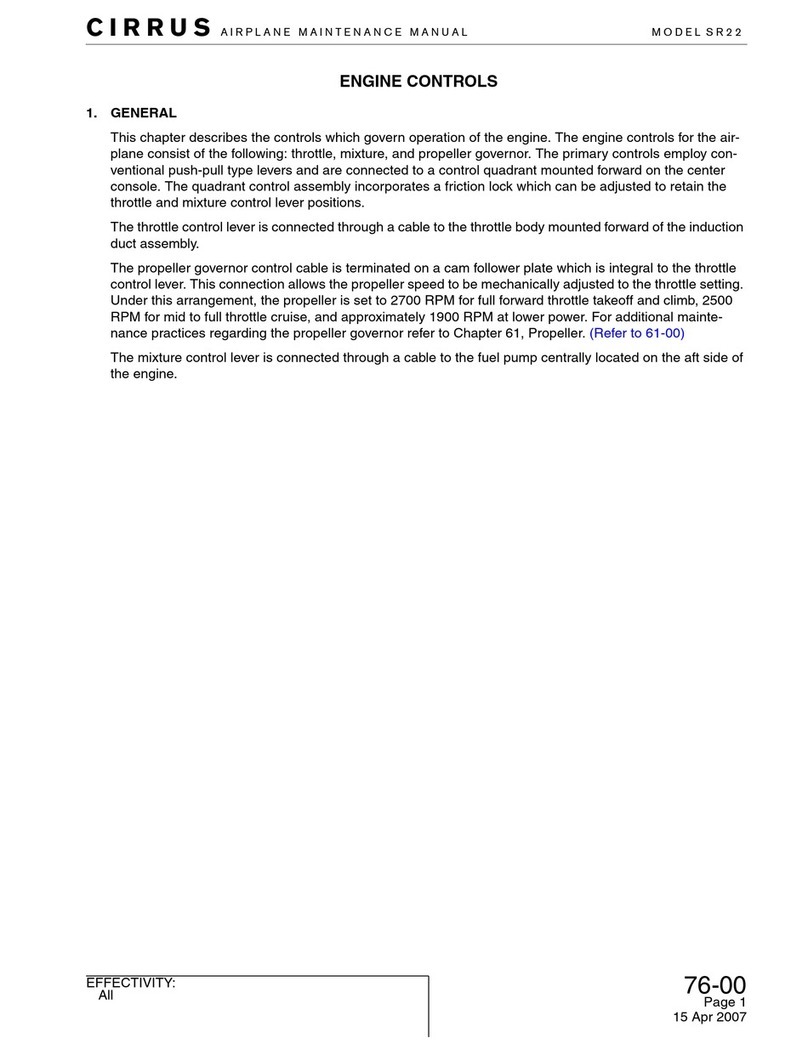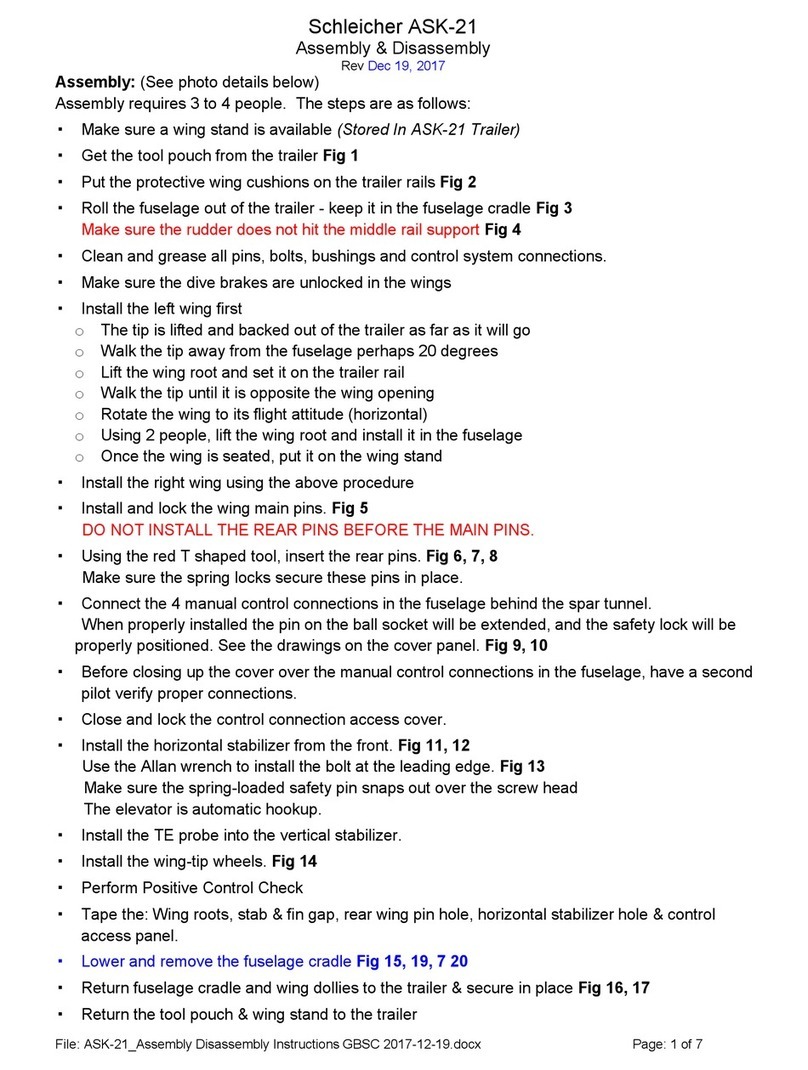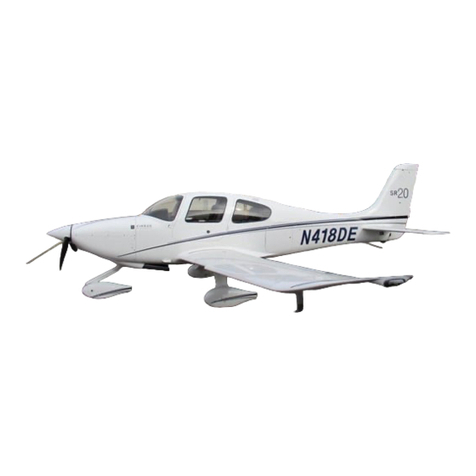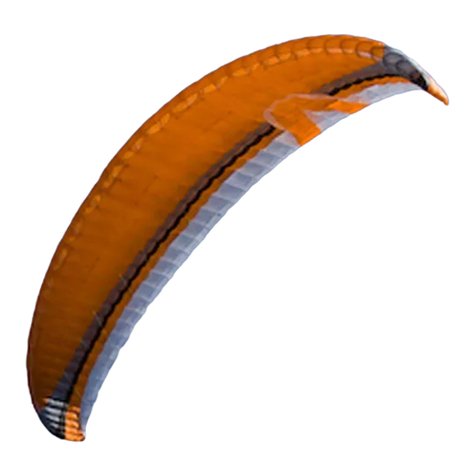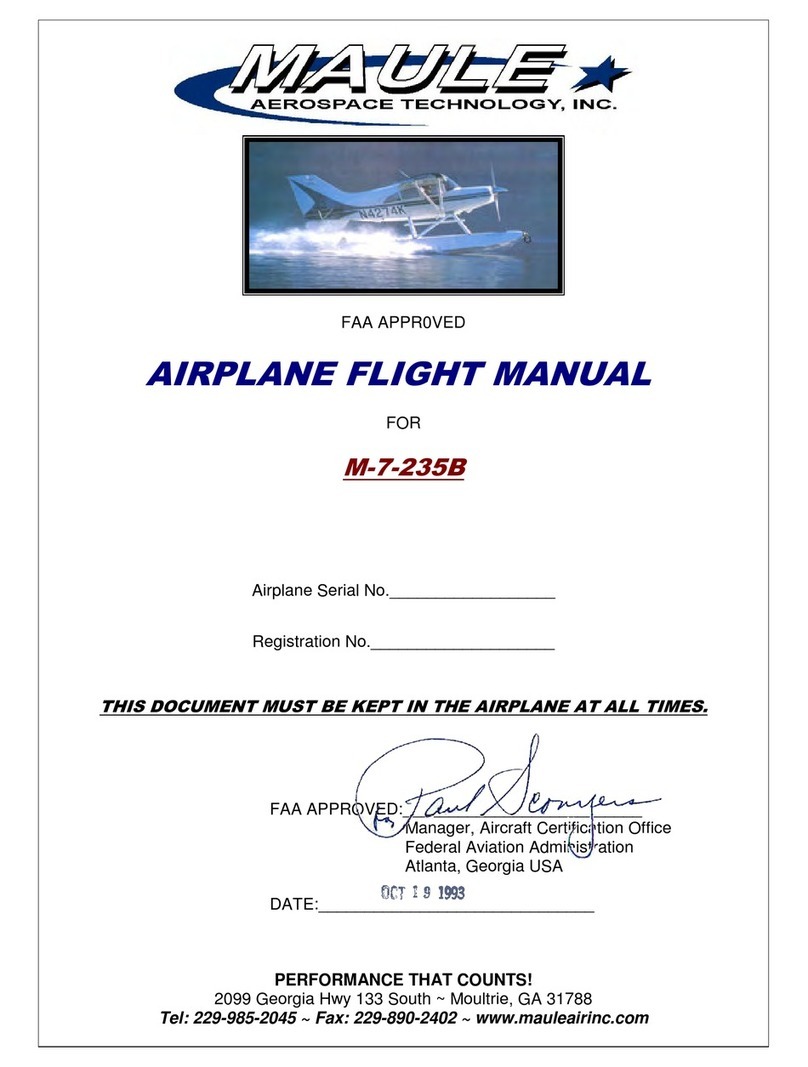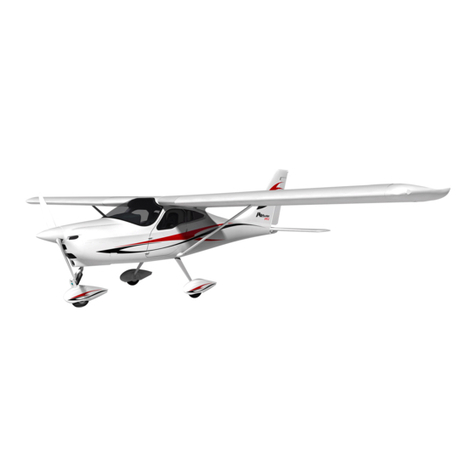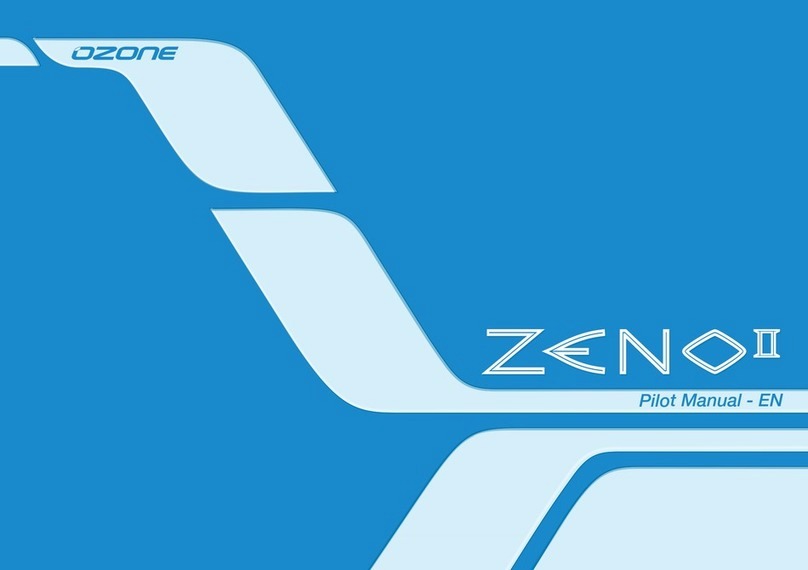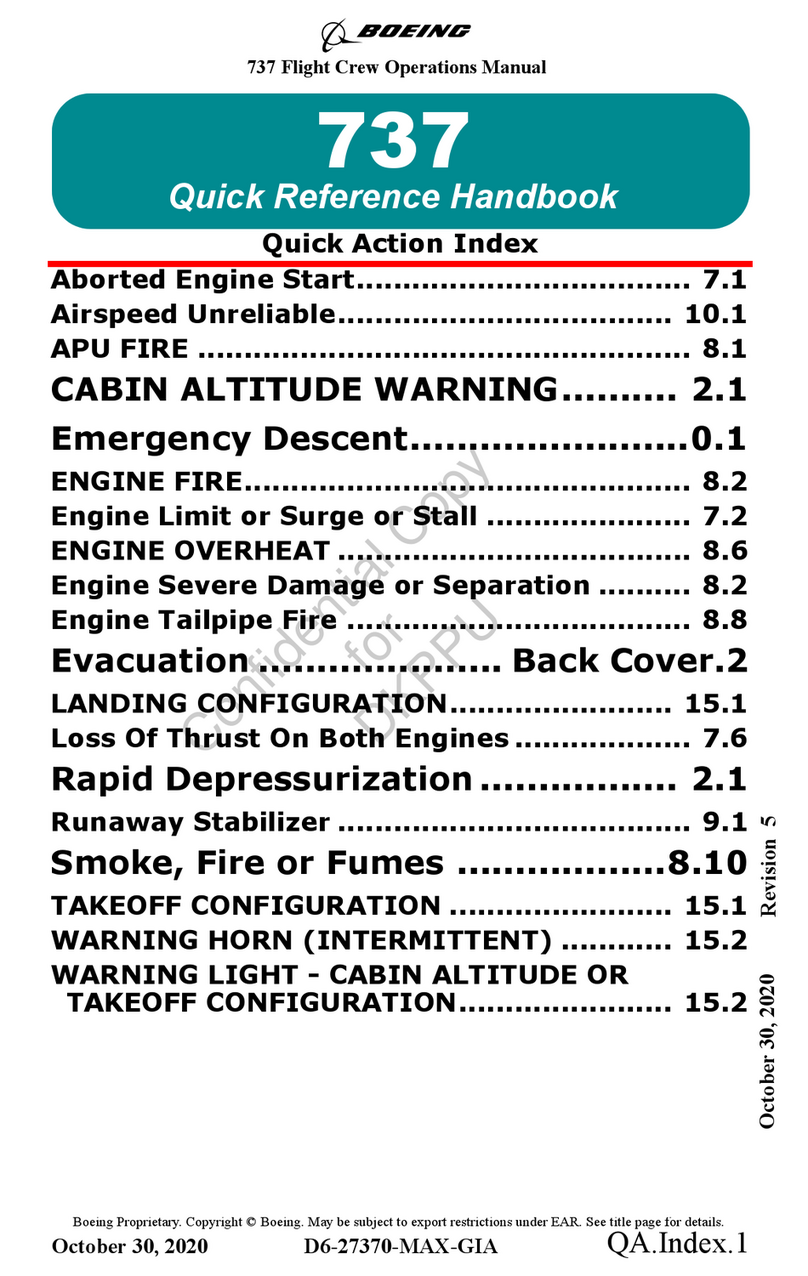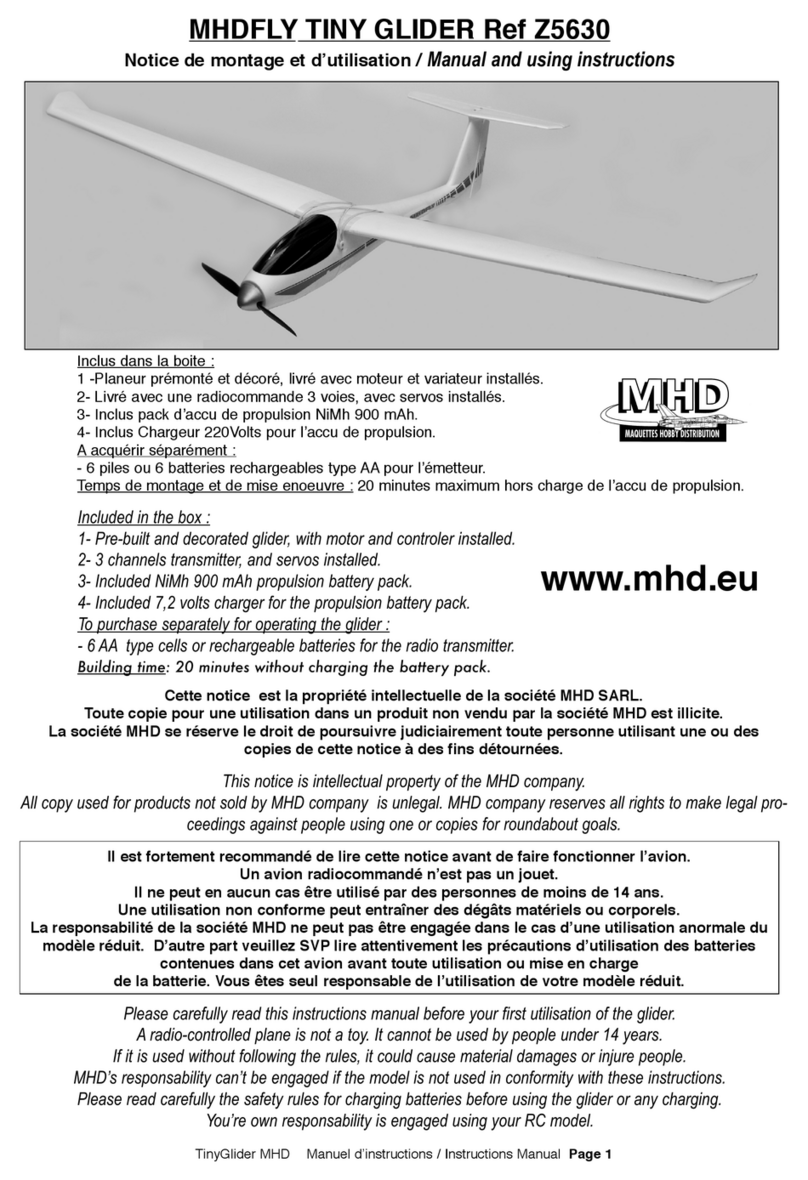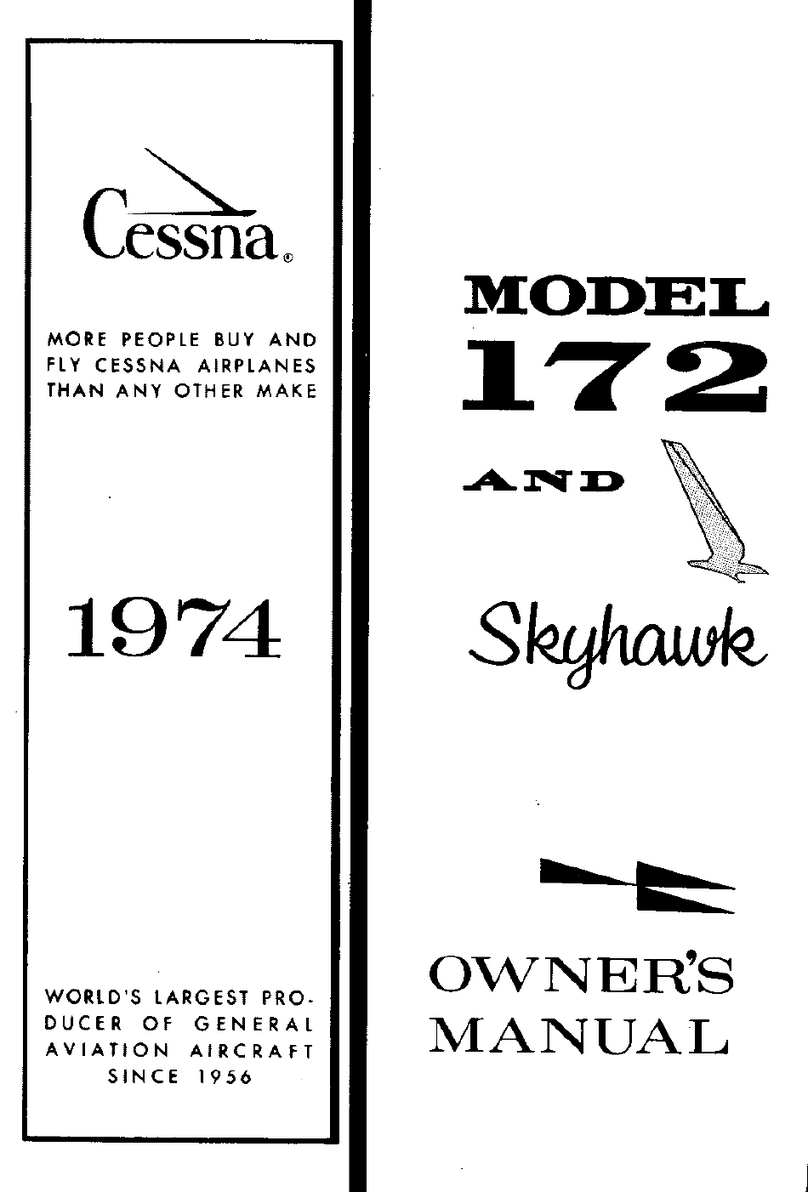10
optimise your thermal skills. A safety (SIV) course is something to consider, as these teach
you how to deal correctly with unstable situations such as collapses, rapid descent
manoeuvres, stalls ands spins, and so you will get far more from your flying.
With the correct technique &qualified instruction the pilot can learn to help stop collap-
ses by flying “actively” & recover the wing more quickly, by the giving the correct input,
when collapses occur. Remember, the glider is tested to recover and so it is always bet-
ter to under-react than to over-react. Over reacting to a situation can prevent the glider
from self-recovering, and recovering air speed, and cause it to enter further unstable
situations.
> asymmetrical tuck/collapse
An asymmetric tuck / collapse is when part (one side) of the wing ( say 20% or even any-
thing up to 90% of the span) tucks or collapses, usually induced by turbulence but some-
times also though poor pilot control in turns and wing-overs.
The TONIC is tested and certified to automatically recover without correction by the pilot
with a maximum direction change of 90 degrees of turn, but with the correct input the
pilot can minimise any turning, and height lose, and help the glider recover more quickly.
There are 3 basic steps to follow immediately if you have a collapse:
1: Weight shift to the flying side of your glider (away from the collapsed side). This helps
stop the rotation &increases pressure in the wing in the inflated side.
2: If needed apply the correct amount of brake to the open (flying) side to slow any rota-
tion (spiral) induced by the collapse. Be very careful not to use too much brake as it is
possible to stall the flying side of the glider, and enter further unstable situations which
may be harder to recover from than the collapse itself.
3: Once the glider has straightened out, or the spiral has slowed, smoothly pull down the
brake on the collapsed side, with a long stroke/pump, &the deflated side of the glider
should re-inflate. As the glider re-opens release the brake immediately but progressively.
With instruction &experience the above will become a reflex action, and the correct
input to give will become second nature to the experienced pilot.
> front/symmetrical tuck collapse
A front tuck /collapse is a symmetric tuck of the leading edge of the wing, starting from
the centre of the canopy to the wing tip. This can be either a tucking of just the central
part of the leading edge of the glider, which can sometimes cause a front 'horseshoe' or
'rosette-ing' of the glider, or even a complete 'blow-out' of the whole canopy in extre-
me situations.
When flying, a front tuck may occur while leaving a strong thermal, or more often while
using the speed system in turbulent air, or sometimes whilst flying down-wind of ano-
ther paraglider &being 'waked' by the wing tip vortices of the glider and turbulence
